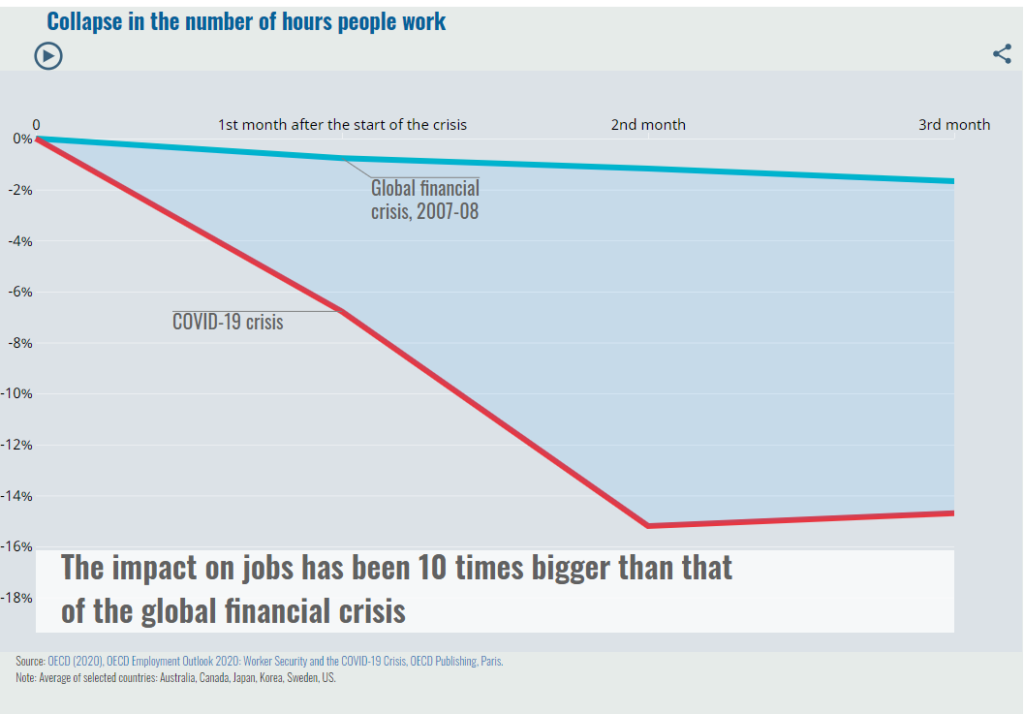COVID-19 is causing activity to collapse and unemployment to soar
As the effects of the pandemic and containment measures hit OECD economies, millions of people have been unable to go to work, resulting in an exceptionally stark drop in activity and unprecedented job losses. Up to 10 times fewer hours were worked in some countries, compared with the first few first months of the 2008 financial crisis.

Unemployment will remain high into 2021
Unemployment is projected to reach nearly 10% in OECD countries by the end of 2020, up from 5.3% at year-end 2019, and to go as high as 12% should a second pandemic wave hit. A jobs recovery is not expected until after 2021.

Whether because of higher unemployment or people working fewer hours, the impact of the pandemic on jobs has not been felt to the same extent in all countries.
Some countries hit worse than others
In some countries, employers used job retention programmes to cut hours while allowing workers to keep their pay and jobs; there, it is likely that the full impact of the pandemic is yet to be felt. In others, there have been unprecedented leaps in unemployment, but many workers will return to their jobs (or to new ones) as economies re-open and activity picks up.
Select a country to view its unemployment data. To learn more, discover our multilingual COUNTRY NOTES (right below the chart).


